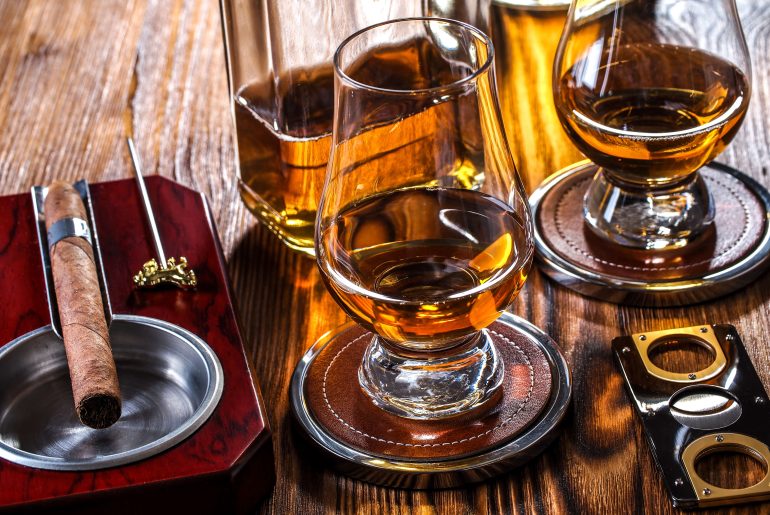Picture this: a warm evening, sitting back in your favorite chair with a fine cigar and a glass of smooth whiskey in one hand. The world seems to slow as you savor the rich flavors and aromas that dance around your senses. Cigars and whiskey are a classic duo, complementing each other in delightful ways. In this article, we embark on a journey of discovery, exploring the art of pairing cigars with different types of whiskey.
So, if you’re ready to elevate your smoking and sipping experience, let’s dive in!
The Basics of Cigar and Whiskey Pairing
Before we delve into the specifics, it’s essential to understand the fundamental principles of cigar and whiskey pairing.
The goal is to create a harmonious balance where the cigar and whiskey enhance each other’s flavors without overpowering one another. The key lies in finding complementary taste profiles.
Understanding Cigar Varieties
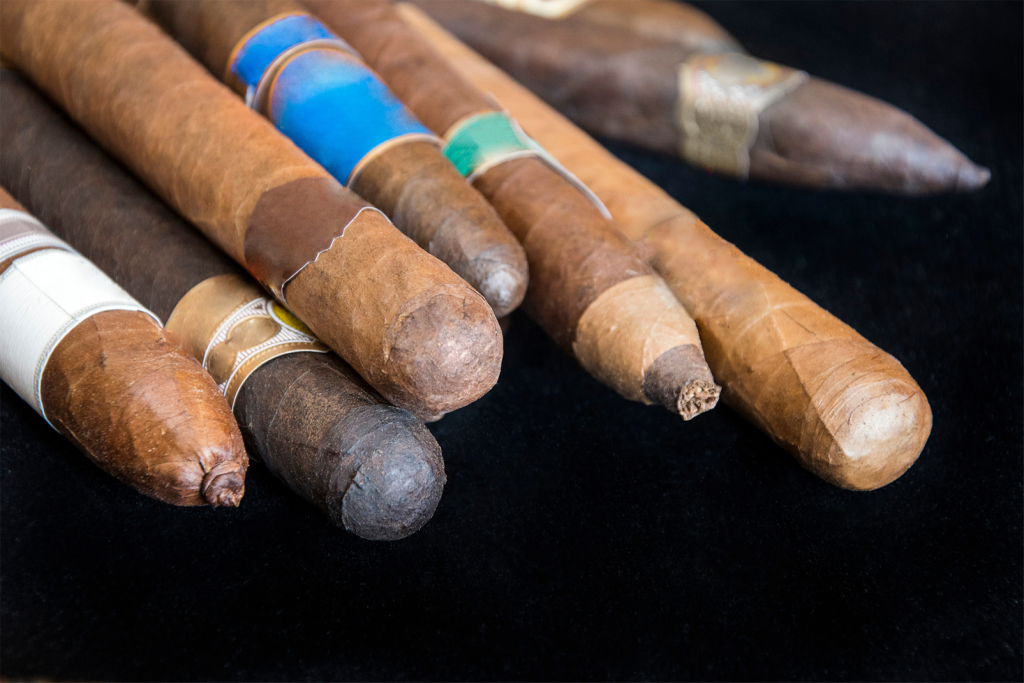
Cigars, like whiskey, come in an array of varieties, each offering unique characteristics. Broadly categorized into three types: mild, medium, and full-bodied-cigars can be further distinguished by their country of origin, wrapper type, and size. Let’s start with the strengths.
Mild Cigars: Mild cigars are ideal for beginners and those seeking smoother, lighter smoke. These cigars often have Connecticut wrappers, producing subtle cream, nuts, and cedar flavors. They pair exceptionally well with Bourbons, which boast a rich yet gentle character, enhancing the cigar’s creamy notes.
Medium-bodied Cigars: For a more robust experience, medium-bodied cigars are the go-to choice. With wrappers from countries like Ecuador or Indonesia, they offer earthy, woody, and slightly spicy flavors. With its bolder and spicier profile, Rye whiskey complements these cigars, resulting in a balanced and enjoyable pairing.
Full-bodied Cigars: For seasoned cigar enthusiasts, full-bodied cigars deliver a potent and intense smoking experience. Nicaraguan or Dominican Republic cigars, known for their complexity and rich tobacco flavors, find an excellent match in peated Scotch. The smoky notes of the whiskey intermingle harmoniously with the boldness of the cigar.
Different Styles of Cigars
In the world of cigars, a diverse array of styles awaits, each boasting its distinct flavor profile. While it’s impossible to cover all cigar varieties extensively, here’s an overview of some common types and their flavor characteristics.
We know maduro cigars for their rich, full-bodied flavor because of the leaves darkening because of being ripened in the sun. They often have notes of chocolate, coffee, and spices. They usually age maduro cigars for a more extended period, which gives them their characteristic flavor.
Habano(s) can be produced in Cuba or grown from Cuban-seed tobacco in, especially Nicaragua and Ecuador, which gives them their unique flavor profile. Habano cigars often have notes of pepper, leather, and earth. They are a popular choice for cigar smokers who enjoy a medium-bodied cigars.
Corojo cigars are made from tobacco grown in Cuba’s Vuelta Abajo region. Their wrappers are darker than Connecticuts — usually reddish-brown. They have a medium-bodied flavor with notes of cedar, nuts, and spices. Corojo cigars are known for their medium-bodied flavor with notes of cedar, nuts, and spices. Corojo cigars are often a good choice for cigar smokers who enjoy a fuller-flavored smoke but do not want a too strong cigar.
Sumatra cigars are made from tobacco sourced from the Sumatra region in Indonesia. They have a medium-bodied flavor with notes of pepper, earth, and spice. Sumatra cigars are a good choice for cigar smokers who enjoy a fuller-flavored smoke with a touch of spice.
Connecticut cigars are made from tobacco grown in the Connecticut River Valley. Traditionally, the plants were grown under cheesecloth to reduce exposure to sunlight. Connecticut cigars are known for their mild and smooth flavor. They often have notes of cream, wood, and nuts (a firm favorite of mine). Connecticut cigars are a good choice for cigar smokers who are new to cigars or prefer milder smoke.
Tasting Notes and Pairing Techniques
When delving into the world of cigar and whiskey pairing, consider the tasting notes of both to create a delightful experience. As you light up your cigar, take a moment to appreciate its aroma, draw, and flavor profile. Notice the interplay of spices, sweetness, and earthiness.
Similarly, when sipping your whiskey, pay attention to its nose, palate, and finish. Identify the dominant flavors and the lingering aftertaste.
To ensure a successful pairing, look for commonalities or complementary flavors between the cigar and whiskey. For instance, if your cigar offers woody and nutty notes, seek a whiskey with similar characteristics to enhance the overall experience.
Recommended Explorations
To achieve successful cigar and whiskey pairings, explore both industries separately. Sample whiskeys from different regions, including bourbons, Scotch, rye, and Japanese whisky, to identify your preferred flavors.
Likewise, try a variety of cigars, starting with milder options like Macanudo Hyde Park and Gisbert Corona, and gradually move towards more robust choices. Armed with knowledge and experience, experiment with pairings, seeking cigars and whiskeys with similar flavor profiles.
Be prepared for some trial and error, but over time, you’ll refine your selections and enjoy the delightful synergy between cigars and whiskey. Embrace the journey of discovery and savor each moment of exploration.
We’ve scoured the internet and numerous whiskey and cigar magazines to bring you a comprehensive guide to pairings below. Ultimately, it is up to you what appeals to you, and some of our recommendations may not appeal to every palate. Enjoy the journey!
1. Single Malt Scotch Whisky
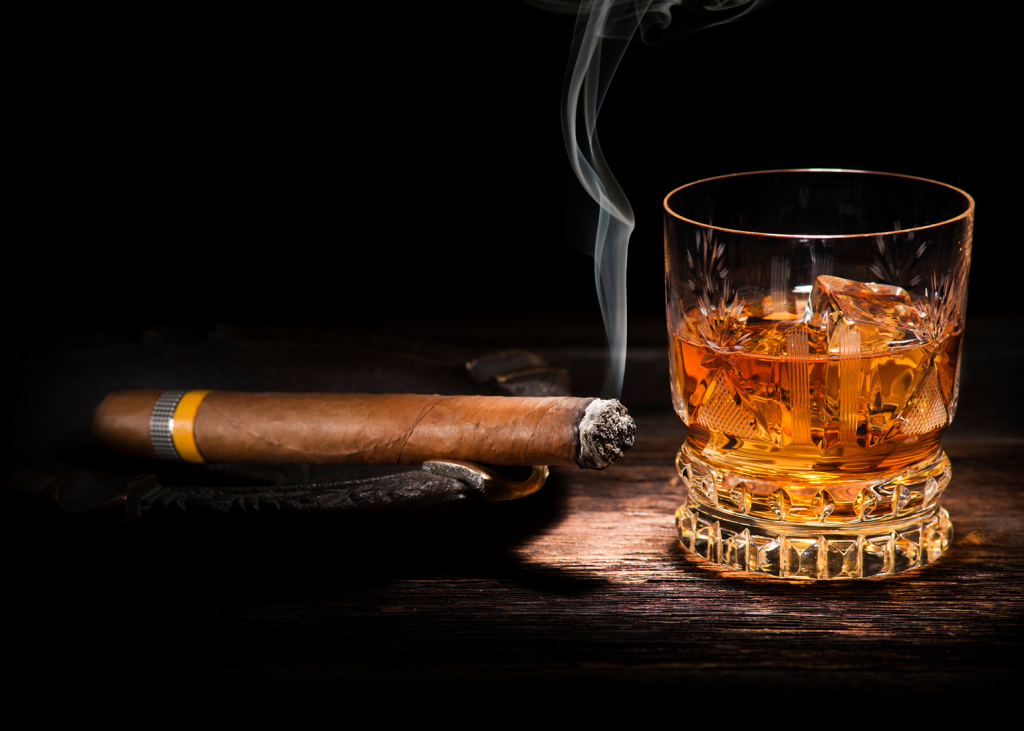
Let’s talk about Scotch whiskey and what makes it so unique! To be called Scotch, it has to be made in Scotland, using water and malted barley. Other grains like corn and wheat can join the party, but barley has to be part of the gang, no exceptions!
Here’s the cool part: the fermentation process is all-natural, thanks to the enzymes inside. Yeast also gets in on the action, adding its magic touch to the mix.
Regarding the alcohol content, Scotch can’t exceed 94.8% ABV during distillation, but it should be bottled with at least 40% ABV. The aging process is a big deal, too; it has to age in oak casks in Scotland for at least three years. Oh, and forget about adding anything funky – just water, caramel coloring, or both, that’s it.
Now, if you’ve heard about single-malt Scotch, it’s the cream of the crop. It’s made at a single distillery from water and malted barley only, and it’s all about those pot stills. Other Scotch whiskies might use column stills, but not these guys!
What’s Single Malt Whisky?
Single malt whisky is one of the most confusing terms in whiskey. Do you know what causes all the confusion? It’s that little word ‘single.’ Let’s break it down—when we talk about a single-malt scotch whisky, it simply means it comes from one and only one distillery.
It’s not about being made from a single batch or barrel, but the key is that it all happens at that specific distillery. So, for example, a single-malt Lagavulin might have whiskies from various barrels made at the Lagavulin distillery, but they are all from Lagavulin.
Now, when it comes to single-grain scotch whisky, the only difference is that it contains barley and one or more cereal grains, like wheat or corn. Again, the word ‘single’ can be a bit misleading. It doesn’t mean it’s made from just one grain. Instead, it’s made at a single distillery. Simple as that!
Suggested Pairings
| Whisky | Tasting Notes | Recommended Cigars |
| The Glenlivet 12-Year-Old | Citrus, vanilla, apple. Light. Fruity. | Macanudo Ashton |
| The Balvenie DoubleWood 12-Year-Old | Oak, vanilla, and honey due to aging in bourbon and sherry casks. | Hoyo de Monterrey Punch |
| Oban 14-Year-Old | Spices. Vanilla. Dried fruit. Medium-bodied. | Davidoff Winston Churchill Late Hour Cohiba |
| Old Perth Cask Strength | Spices. Dried fruit. Honey. Aged in sherry casks. | Romeo y Julieta H. Upmann |
| Mac-Talla Mara | Gentle salinity and minerality. Citrus. Soft smokiness/peat. | Montecristo Partagas |
| Laphroaig 16-Year-Old Single Malt Scotch | Saltiness. Smoke. Grilled peaches and pineapple. With water, expect hints of vanilla, toffee, and some sweetness. | Davidoff Escurio Cohiba Siglo V Tubo Hoyo de Monterrey Epicure No. 2 Tubo |
2. Irish Whiskey
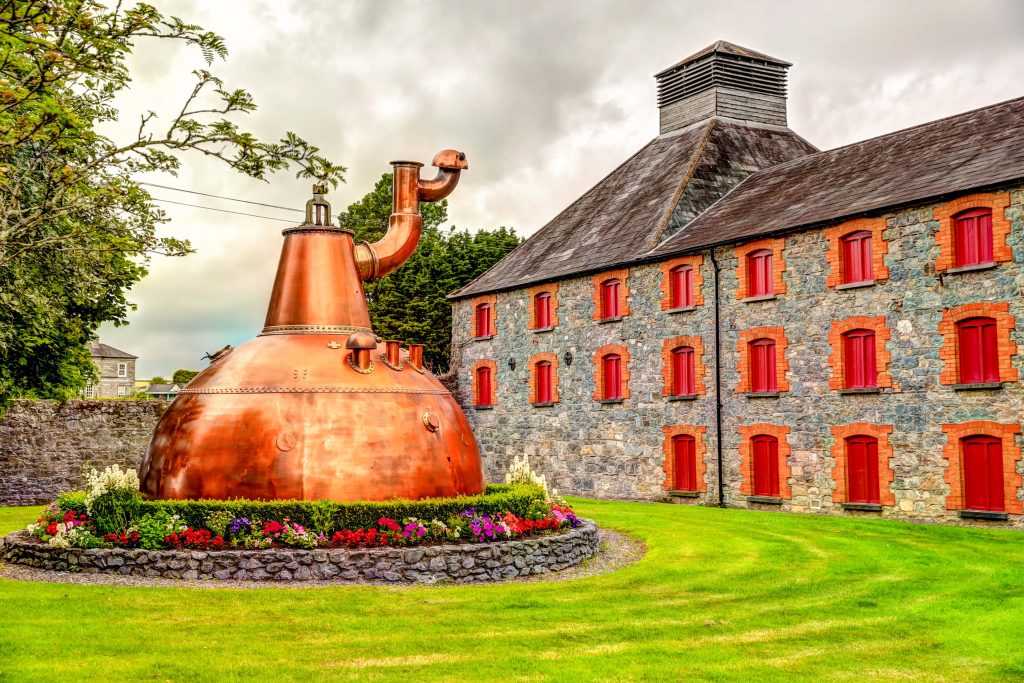
To be officially recognized as Irish whiskey, the spirits must adhere to specific regulations. Firstly, they must undergo the distillation process within the confines of the Republic of Ireland or Northern Ireland. During this distillation process, a mixture of cereals is utilized, and the mash must be saccharified using malt diastase or other natural diastases. Yeast is then introduced to ferment the mixture. The distillation itself must be conducted so that the resulting alcoholic strength is below 94.8% by volume, which ensures that the distillate carries the distinct aroma and flavor derived from the raw materials used.
In addition to the distillation process, the spirits must undergo a mandatory maturation period in wooden casks. This maturation can occur in an Irish warehouse for a minimum of three years or in a Northern Irish warehouse for a similar duration.
Alternatively, distillers may mature the spirits by using a combination of both locations as long as the aggregate maturation time totals no less than three years.
These regulations are essential to maintain the authenticity and quality of Irish whiskey, preserving its unique characteristics and flavors cherished by whiskey enthusiasts worldwide.
Suggested Pairings
| Whiskey | Tasting Notes | Recommended Cigars |
| Jameson 18-Year-Old | Full-bodied. Caramel. Oak. Vanilla. Nuts. Leather | Padron 1964 Anniversary |
| Bushmills 21-Year-Old | Caramel. Oak. Vanilla. | La Gloria Cubana Serie D N°5 |
| Tullamore DEW XO Caribbean Rum Cask Finish | Stone fruits. Nutmeg. Pineapple. Hints of dried strawberry and coffee. Long sweet finish. | Four Kicks Selección No. 5 Casa Magna Jalapa Claro Toro Box Press |
| Connemara 12-Year-Old | Smokey apple. Pepper. Vanilla. Peat smoke. | Romeo y Julieta 1875 Deluxe No. 1 |
| Redbreast 12-Year-Old Single Pot Still | Raisins. Nougat. Candied fruits. Caramel. Toasted marshmallow. Light hint of toasted wood. | Four Kicks Selección No. 5 Casa Magna Jalapa Claro Toro Box Press |
3. Japanese Whisky
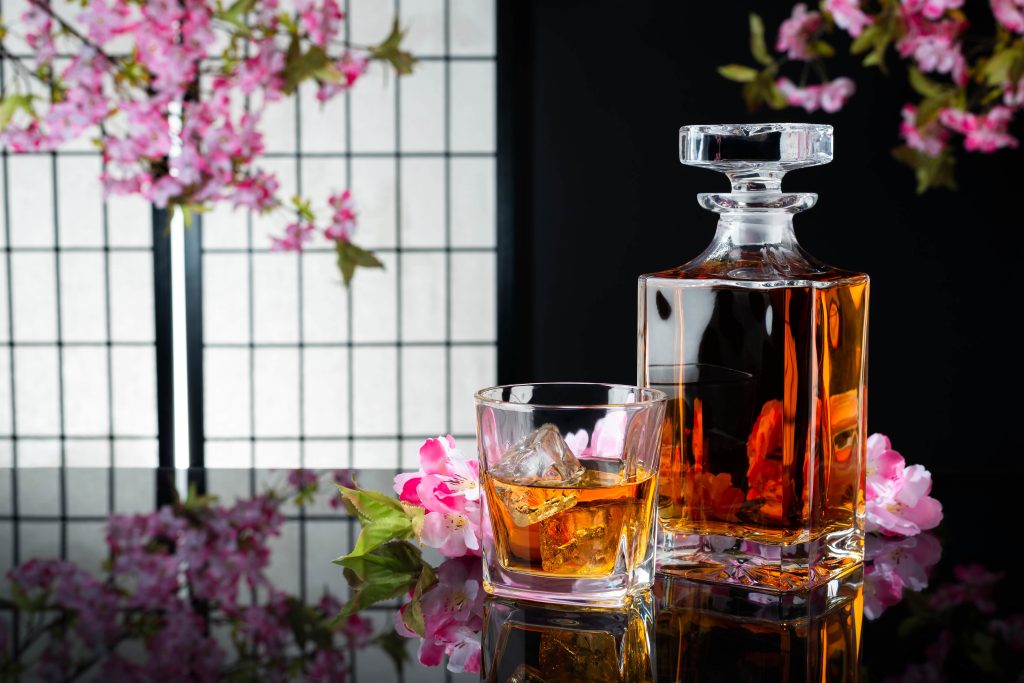
Surprisingly, Japanese whisky has a more extended history than many people realize. The journey began in 1923 when the first malt distillery started producing this beloved spirit. Over the past century, a few distilleries have significantly shaped various Japanese whisky styles.
However, things have taken a dramatic turn since the early 2000s. We’ve witnessed a remarkable surge in both its popularity and innovative approaches. Gone are the days when only a few producers dominated the scene; now, many whisky makers are in Japan.
This newfound momentum propels Japanese whisky into an exciting new era of whiskey-making, brimming with possibilities and creativity.
Suggested Pairings
| Whisky | Tasting Notes | Recommended Cigars |
| Nikka From The Barrel | Fresh fruit. Flowers. Spices. Toffee. Caramel. Oak. | My Father La Opulencia |
| Kamiki Intense Japanese Whisky | Dark fruits. Black pepper. Peatiness. Raisins. | Plasencia Alma Del Fuego |
| Yamazaki 18-Year Single Malt | Truffle. Raisins. Strawberry. Blackberry jam. Honey. Pepper. Toffee. Tobacco. Marmalade. | Ashton ESG |
| Mars Shinshu Iwai Tradition | Orange peel. Brown sugar. Raisin. Honey. Toffee. Cinnamon. | La Aroma de Cuba Mi Amor |
| Hakushu 12-Year-Old | Green tea. Kiwi. Pear. Mint. Smoke. | Padrón 1964 Anniversary |
4. Bourbon
According to US government regulations, bourbon must meet specific criteria: it should have at least 51% corn in the grain mixture, be aged in brand newly charred oak barrels, and its distillation can’t exceed 160 proof (80% ABV), though most are distilled at a lower proof. Before aging, it must not go into the barrel above 125 proof (62.5% ABV); when bottled, it must be at least 80 proof (40% ABV). The remaining grains in bourbon include wheat, rye, malted rye, and malted barley, with some distilleries experimenting with rice, oats, and other grains. Bourbon aging occurs in those fresh charred-oak barrels without specific time requirements.
Unlike Scotch and Irish whiskies, bourbon makers can use enzymes to break down the grain mash. Using new charred oak barrels adds distinctive oak, caramel, and vanilla flavors. There’s a world of different taste options for bourbon and cigars.
Suggested Pairings
| Bourbon | Tasting Notes | Recommended Cigars |
| Angel’s Envy Kentucky Straight Bourbon | Leather. Smokiness. Rock candy. Cherries. Green apple. Citrus. | Arturo Fuente Añejo |
| Joseph Magnus Cigar Blend Bourbon | Spiced oak. Dark fruits. Toffee. Vanilla. Caramel. | Davidoff Robusto Intenso |
| Pappy Van Winkle Family Reserve Bourbon | Corn. Vanilla. Caramel. Leather. Oak. Complex yet smooth overall taste. | Montecristo White Series |
| Woodford Reserve Kentucky Straight Bourbon | Cocoa. Vanilla. Tobacco. Honey. | La Aroma De Cuba Mi Amor |
| Bulleit Kentucky Straight Bourbon Whiskey | Oak. Vanilla. Spices. Honey. | Oliva Melanio Maduro |
6. Rye Whiskey
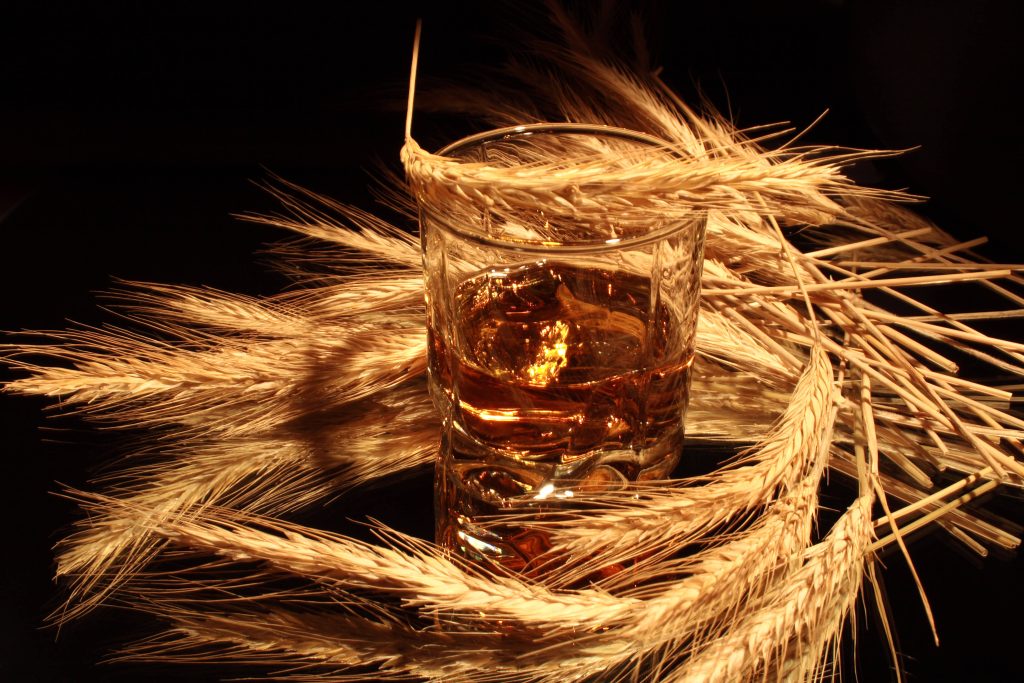
Rye whiskey has some interesting rules, especially if it’s labeled as rye in the United States. While distillers can make it anywhere in the world, there are specific criteria it must meet in the USA.
First, it must be made from a fermented mash with at least 51% rye grain, though the rest can be other cereal grains. Like bourbon, the distillation process can’t go above 80% ABV, and it needs to be proofed down to enter the barrel at a maximum of 62.5% ABV.
To add that rye whiskey’s charm, it must be matured in new charred-oak barrels. And last but not least, when bottled, it should have a minimum alcohol content of 40% ABV.
Suggested Pairings
| Whiskey | Tasting Notes | Recommended Cigars |
| Sazerac 6-Year Rye | Caramel. White pepper. Coffee beans. Leather. | Oliva Serie V Melanio |
| Angel’s Envy Rye | Dry finish. Sherry. Rum. Oak. Sweet. | Ashton Symmetry |
| Michter’s US*1 Single Barrel Rye | Citrus. Pepper. Oak. Butterscotch. | Padron 1964 Anniversary Maduro |
| J.P Wiser’s (Canadian) Rye Whiskey | Pear. Caramelized sugarcane. Green apple. | Davidoff Winston Churchill Churchill |
| Willett Family Estate 4-Year Rye | Cinnamon. Pepper. Vanilla. Tart cherry. Dark fruit. | San Cristobal Quintessence |
Conclusion
In the world of leisurely indulgence, the combination of cigars and whiskey stands as a timeless symbol of luxury and sophistication. Understanding the nuances of pairing different cigar and whiskey types can elevate your experience from enjoyable to extraordinary. So, whether you’re celebrating a special occasion or simply unwinding after a long day, take the time to explore and appreciate the art of cigar and whiskey pairing. Cheers, and happy smoking!

